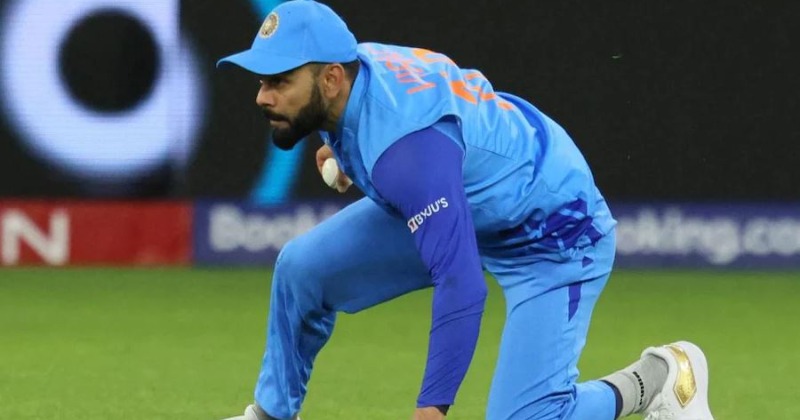This T20 World Cup saw India and Bangladesh play out a tight game as the Men in Blue successfully defended a revised target of 151. Bangladesh at one point looked set to win but rain dented their momentum and they fell short.
Controversy
The victory meant Rohit Sharma’s men come one step closer to sealing a place in the semifinal while Bangladesh are on the brink of being eliminated from the tournament. But after the game was over, Bangladesh’s Nurul Hasan dropped a bombshell. The man claimed that India had indulged in fake fielding.

AFP
“We all saw that it was a wet ground. Eventually, when we talk about these things, there was also a fake throw. It could have been a five-run penalty. That also could have gone our way, but unfortunately, even that didn’t materialise,” he said.
Evidence
A video showed Virat Kohli trying to throw a ball toward the bowler’s end despite not having it. Bangladesh could have gotten 5 extra runs if it had come to the notice of the umpires. As fate would have it, Bangladesh were six runs short of their target. While the debate about the rule continues, the question to be asked is what exactly is it? Let’s find out.

Twitter
The ICC introduced the Fake Fielding rule in 2017.
Rule explained
“It is unfair for any fielder wilfully to attempt, by word or action, to distract, deceive or obstruct either batsman after the striker has received the ball,” says Law 41.5.1.
“It is for either one of the umpires to decide whether any distraction, deception or obstruction is wilful or not,” says Law 41.5.2.
The on-field umpires were to take a call as to the fact if an incident of fake fielding had taken place. If that had happened, Bangladesh would have been awarded those five extra runs which would have forced the game into a Super Over.
Impact
Before the rule was implemented, fielders used to indulge in it quite a bit. Batters have been caught unawares numerous times and many times wickets have fallen too. The ICC decided it needed to be curbed and the rule to make it illegal was passed five years back. Not that fielders don’t do it anymore, but they cannot be as open about it as they would in earlier days.
Some might argue it is not actually illegal as the batter is falling for a trick, but then many would say it is misleading an opponent using unfair means.
Cricket is evolving and the game has seen several rule changes over the years. Fake fielding is one of them and it is here to stay. No doubt umpires will continue to be vigilant and penalise teams that are caught indulging in it.

